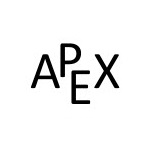2.7.1: Exercises 2.7
( \newcommand{\kernel}{\mathrm{null}\,}\)
In Exercises 2.7.1.1 - 2.7.1.4, matrices A and B are given. Compute (AB)−1 and B−1A−1.
A=[1211],B=[3525]
- Answer
-
(AB)−1=[−231−1.4]
A=[1234],B=[7121]
- Answer
-
(AB)−1=[−7/103/1029/10−11/10]
A=[2538],B=[1−114]
- Answer
-
(AB)−1=[29/5−18/5−11/57/5]
A=[2425],B=[2265]
- Answer
-
(AB)−1=[−29/4617/2−7]
In Exercises 2.7.1.5 - 2.7.1.8, a 2×2 matrix A is given. Compute A−1 and (A−1)−1 using Theorem 2.6.3.
A=[−351−2]
- Answer
-
A−1=[−2−5−1−3],(A−1)−1=[−351−2]
A=[3524]
- Answer
-
A−1=[2−5/2−13/2],(A−1)−1=[3524]
A=[2713]
- Answer
-
A−1=[−371−2],(A−1)−1=[2713]
A=[9079]
- Answer
-
A−1=[1/90−7/811/9],(A−1)−1=[9079]
Find 2×2 matrices A and B that are each invertible, but A+B is not.
- Answer
-
Solutions will vary.
Create a random 6×6 matrix A, then have a calculator or computer compute AA−1. Was the identity matrix returned exactly? Comment on your results.
- Answer
-
Likely some entries that should be 0 will not be exactly 0, but rather very small values
Use a calculator or computer to compute AA−1, where
A=[12341491618276411681256].
Was the identity matrix returned exactly. Comment on your results.
- Answer
-
Likely some entries that should be 0 will not be exactly 0, but rather very small values.


